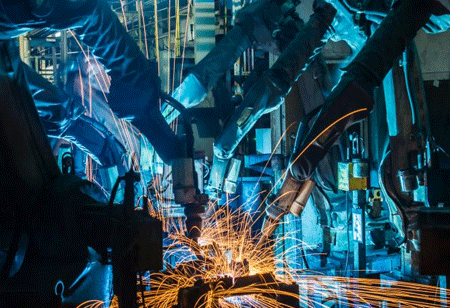THANK YOU FOR SUBSCRIBING
Welding breakthrough could transform manufacturing
Since its demonstration, laser technology has become an integral part of various industries having a multitude of applications from functioning as a simple light source to cut through the toughest materials.

By
Apac CIOOutlook | Thursday, March 07, 2019
Stay ahead of the industry with exclusive feature stories on the top companies, expert insights and the latest news delivered straight to your inbox. Subscribe today.
Since its demonstration, laser technology has become an integral part of various industries having a multitude of applications from functioning as a simple light source to cut through the toughest materials. Researchers at Heriot-Watt University has rolled out a welding breakthrough which can transform the manufacturing industry. They have successfully fused glass to the metal industry using an ultrafast laser system, a triumph previously been impossible because of the difference in thermal properties which would cause the glass to shatter.
Traditionally, welding has been limited to materials that share similar thermal properties. The Heriot-Watt laser system uses pulses of infrared light which endure a picosecond (one trillion of a second) when applied in tracks along the materials for binding them together. Various optical materials like quartz, borosilicate glass, and even sapphire were all successfully welded to metals like aluminum, titanium, and stainless steel using this laser system.
Check This Out: Managing MFG
The segments to be welded are brought in close contact before the laser is focused through the optical material to provide small and highly intense spot at the interface between two materials. This creates a microplasma inside the material surrounded by a highly confined melt region. Researchers have tested welds at -50C to 90C and the welds remained intact showing that they are robust enough to cope with extreme thermal variations.
This welding breakthrough could efficiently transform the manufacturing sector by omitting the need for adhesives, increasing durability and offering more design flexibility. It can also have direct application for businesses active in the aerospace and defense, optical technology, and healthcare fields. An instance where this system is useful is in providing mechanical coupling between parts in large marine engines such as container ships. Currently, equipment and products that involve glass and metal solutions are often held together by adhesives that are messy to apply, and segments can gradually creep or move. Out glassing—organic chemicals from the adhesive can be gradually released and can lead to reduced product life —is another challenge.
The development of laser scanning strategies, testing of different laser parameters and testing of manufactured parts also are the areas of focus of the research.
See Also: Top Manufacturing Technology Companies





